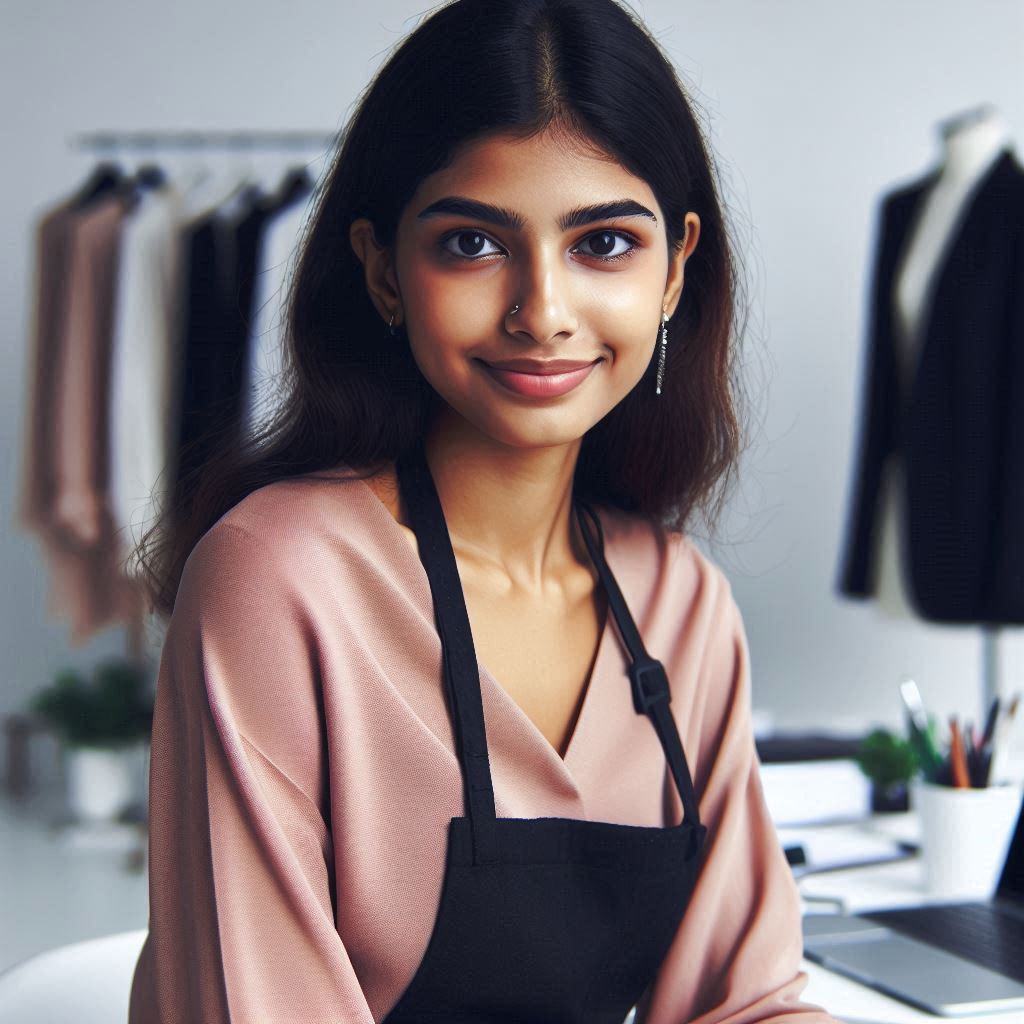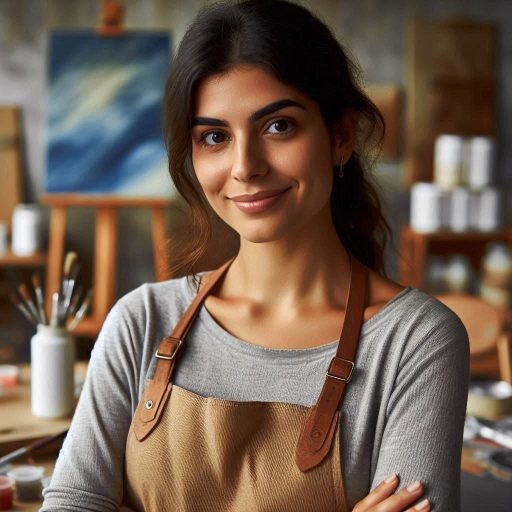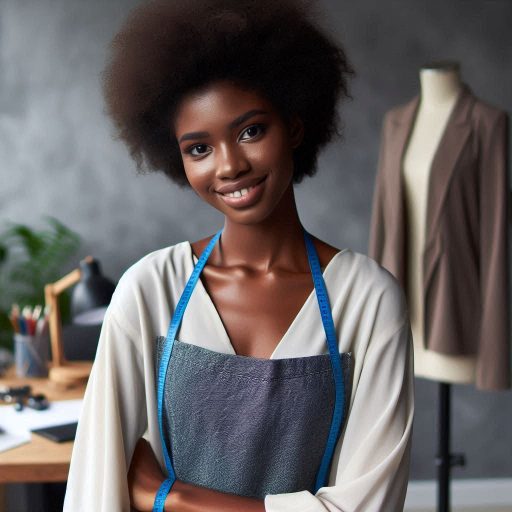Introduction
Captivating fashion editorials make a powerful statement in the world of style.
Imagine a vibrant, eye-catching spread that tells a story and defines trends.
Fashion editorials are more than just photo shoots‘they‘re visual narratives that captivate and inspire.
They showcase not only clothing but also creativity, innovation, and artistic vision.
Creating stunning fashion editorials involves more than selecting beautiful outfits and stunning models.
It requires a deep understanding of visual storytelling and a knack for creating striking compositions.
A successful editorial blends fashion with art, offering readers a glimpse into a unique vision and perspective.
Fashion editorials play a crucial role in the fashion industry.
They set trends, influence consumer choices, and highlight emerging designers.
These editorials are a platform where fashion meets art, driving conversations and setting the tone for upcoming seasons.
They act as a bridge between the runway and the everyday fashionista, translating high-fashion concepts into accessible, aspirational content.
In the competitive world of fashion, editorials are a chance to stand out.
They capture the essence of a brand, showcase innovation, and create a memorable impression.
By focusing on storytelling and artistic execution, fashion editorials become powerful tools for engagement and influence.
Understand the concept of fashion editorials
What fashion editorials are and their purpose
Fashion editorials are visual narratives that showcase clothing and accessories through striking imagery.
They aim to captivate, inspire, and inform readers about current fashion trends and styles.
By blending artistry with fashion, editorials create a compelling story that goes beyond simple product displays.
The different types of fashion editorials, such as lookbook, beauty, and storytelling editorials
There are several types of fashion editorials.
Lookbook editorials highlight new collections, presenting each piece in a cohesive style.
These editorials often feature models wearing complete outfits to showcase a designer’s vision.
Transform Your Career Today
Unlock a personalized career strategy that drives real results. Get tailored advice and a roadmap designed just for you.
Start NowBeauty editorials focus on makeup, hairstyles, and skincare, emphasizing how these elements complement fashion.
These are essential for promoting beauty products and trends.
Storytelling editorials weave a narrative around fashion, using clothing to enhance a story or theme.
These often involve elaborate settings and props to create a mood or tell a story.
The importance of creativity and storytelling in fashion editorials
Creativity and storytelling are crucial in fashion editorials.
Creativity ensures that the visuals stand out and grab attention, setting trends and influencing fashion choices.
Effective storytelling, on the other hand, connects the audience emotionally to the fashion being presented.
It transforms clothing from mere items into characters in a visual tale.
Together, these elements make fashion editorials not just advertisements but art forms that resonate deeply with viewers.
In summary, fashion editorials are powerful tools for fashion communication.
They serve diverse purposes, from showcasing new collections to highlighting beauty trends and telling compelling stories.
Understanding the different types of editorials and the importance of creativity and storytelling can elevate the impact of any fashion editorial, turning it into a memorable visual experience.
Read: Internships for Aspiring Art Conservators/Restorers
Select a theme or concept
The significance of choosing a theme or concept for a fashion editorial
Choosing a theme or concept is crucial for creating a stunning fashion editorial.
It provides direction and coherence, ensuring that all elements align with a unified vision.
Without a clear theme, an editorial can become disjointed and lack impact.
Tips on how to brainstorm and choose an appropriate theme
To brainstorm and choose an appropriate theme, start by identifying current trends and interests.
Explore fashion magazines, social media, and art for inspiration.
Consider your target audience and what resonates with them.
Think about the message you want to convey through the editorial.
Transform Your Career Today
Unlock a personalized career strategy that drives real results. Get tailored advice and a roadmap designed just for you.
Start NowOnce you have a list of potential themes, evaluate them for originality and relevance.
Ask yourself how each theme aligns with your brand’s identity.
Select a theme that excites you and fits within your editorial‘s budget and resources.
Ensure that the theme has enough scope to explore creatively.
The importance of staying true to the theme throughout the editorial
Staying true to the theme throughout the editorial is essential for consistency.
Every element, from styling and makeup to location and lighting, should reflect the chosen concept.
This consistency creates a stronger visual narrative and helps the audience connect with the editorial on a deeper level.
Incorporate the theme into every decision, including wardrobe choices and poses.
Communicate the theme clearly with your team to ensure everyone is aligned.
Regularly review your work to ensure it remains on track.
By selecting a compelling theme and adhering to it, you create a cohesive and visually striking fashion editorial that captures attention and leaves a lasting impression.
Read: How to Stay Inspired and Creative in Art and Design
Plan the styling and wardrobe
The crucial role of styling in creating stunning fashion editorials
Styling is pivotal in creating stunning fashion editorials.
It translates a concept into a visual narrative, enhancing the overall impact of the shoot.
The right styling makes each shot resonate with the intended theme and mood.
Tips on selecting the right clothing, accessories, and props for the editorial
Start by selecting clothing that aligns with the editorial‘s theme.
Choose garments that not only fit the model well but also reflect the desired style and tone.
Fabrics should complement each other and contribute to the overall visual appeal.
Accessories and props further define the editorial‘s character.
Select accessories that accentuate the clothing without overwhelming it.
Transform Your Career Today
Unlock a personalized career strategy that drives real results. Get tailored advice and a roadmap designed just for you.
Start NowProps should enhance the narrative, adding depth and context to the images.
Avoid clutter by choosing elements that blend seamlessly with the clothing.
The importance of creating a cohesive and visually pleasing aesthetic
Creating a cohesive and visually pleasing aesthetic is essential.
Ensure all elements, from clothing to props, work harmoniously.
Colors, textures, and styles should align to create a unified look.
Consistency in styling helps convey the editorial‘s message clearly and effectively.
Therefore, meticulous planning in styling and wardrobe selection is crucial for stunning fashion editorials.
Choose clothing and accessories that enhance the theme and maintain a cohesive aesthetic for a visually compelling outcome.
Read: Certifications Needed for Art Conservators/Restorers

Scout for locations and plan the shoot
Selecting the right location is crucial for creating stunning fashion editorials.
The location shapes the editorial’s mood, style, and overall impact.
It can complement the clothing, set the tone, and add depth to the story you want to tell.
The impact of location on the overall look and feel of the editorial
Start by scouting for unique and fitting locations.
Look for places that align with your editorial‘s theme.
Consider whether you need an urban backdrop, a serene natural setting, or a luxurious indoor space.
Unique locations can make your editorial stand out and add a memorable touch.
Advice on scouting for unique and fitting locations
When scouting locations, visit them in person if possible.
Observe how natural light affects the space throughout the day.
Take note of any potential challenges, such as restricted access or busy surroundings.
Photograph the location to visualize how it complements your wardrobe and concept.
Transform Your Career Today
Unlock a personalized career strategy that drives real results. Get tailored advice and a roadmap designed just for you.
Start NowThe importance of planning the logistics and timeline for the shoot
Planning logistics and timeline is equally important.
Create a detailed schedule that includes travel time, setup, and shooting periods.
Factor in time for any unexpected delays.
Ensure all team members, including models, stylists, and assistants, are aware of the plan.
Having a clear timeline helps keep the shoot organized and efficient.
Coordinate with the location‘s management regarding permits, access, and any restrictions.
Confirm all technical requirements, such as lighting setups or equipment access, are in place.
Planning ahead ensures that you can focus on capturing the perfect shots without last-minute issues.
Basically, the location significantly influences your editorial‘s look and feel.
Scouting unique spots and carefully planning logistics and timelines are essential steps.
By doing so, you create a cohesive and visually compelling fashion editorial that leaves a lasting impression.
Read: Famous Art Conservators and Their Achievements
Collaborate with a Creative Team
Creating stunning fashion editorials demands effective collaboration among a talented team.
Success hinges on combining diverse skills and visions to produce a cohesive and captivating result.
The Importance of Collaboration
Collaboration is crucial for fashion editorials.
A unified team brings varied expertise, enhancing creativity and efficiency.
Each member contributes a unique perspective, which elevates the overall quality.
Without collaboration, the final product may lack the polish and coherence seen in top editorials.
The Roles of Different Team Members
Each team member plays a vital role in the editorial process.
Photographers capture the visual essence, framing each shot to highlight the fashion and mood.
Transform Your Career Today
Unlock a personalized career strategy that drives real results. Get tailored advice and a roadmap designed just for you.
Start NowStylists curate outfits, ensuring each piece complements the overall theme.
Makeup artists enhance the model’s look, providing the perfect finishing touch.
Models bring the clothing to life, showcasing it with their expressions and poses.
Together, these roles blend to create a polished final product.
Tips on Effective Communication and Teamwork
Effective communication is key to smooth operations.
Start by setting clear goals and expectations for the shoot.
Regular check-ins help keep everyone aligned with the vision.
Encourage open feedback, allowing team members to voice their ideas and concerns.
Respect each person’s expertise and be willing to adapt as needed.
A positive, collaborative environment fosters creativity and ensures that the team works harmoniously towards a common goal.
Essentially, successful fashion editorials are a result of effective collaboration among a skilled team.
By understanding each member’s role and communicating clearly, you create editorials that captivate and inspire.
Focus on Lighting and Composition
In fashion editorials, lighting and composition are crucial for creating stunning visuals.
Proper lighting sets the mood and enhances the overall aesthetic.
It can make or break a photo shoot, influencing how textures, colors, and details appear.
Good lighting ensures that every element of the outfit stands out, capturing its true essence.
Significance of Proper Lighting
Lighting plays a pivotal role in fashion editorials.
It highlights the textures and colors of clothing, creating depth and interest.
Proper lighting can also evoke specific moods, from dramatic shadows to soft, romantic glows.
The right lighting setup can elevate a standard shoot into something extraordinary.
Transform Your Career Today
Unlock a personalized career strategy that drives real results. Get tailored advice and a roadmap designed just for you.
Start NowTips on Using Natural Light or Artificial Lighting
Natural light can produce beautiful, soft effects.
Shoot during golden hours‘early morning or late afternoon‘for a warm, flattering glow.
Position your subject near windows or in shaded outdoor areas for even lighting.
Artificial lighting offers more control and versatility.
Use softboxes or diffusers to create soft, even light.
Experiment with different angles and intensities to achieve the desired effect.
Lighting setups like three-point lighting‘key light, fill light, and backlight‘can enhance depth and dimension.
Importance of Composition and Framing
Composition and framing are essential for creating visually striking images.
They guide the viewer’s eye and highlight key elements.
Use techniques like the rule of thirds to place the subject off-center, creating balance and interest.
Experiment with various angles and perspectives to find the most flattering view.
Pay attention to the background and surroundings; ensure they complement rather than distract from the fashion pieces.
Strong composition leads to powerful visuals that capture attention and convey the intended message effectively.
By mastering lighting and composition, you can produce fashion editorials that are both aesthetically pleasing and impactful.
Gain More Insights: Sustainability in Packaging Design: Key Practices
Capture Unique and Compelling Images
Capturing unique and compelling images is crucial for creating memorable fashion editorials.
The goal is to engage viewers and convey a strong narrative through visuals.
To achieve this, consider the following aspects:
Importance of Unique and Engaging Photos
Fashion editorials thrive on originality and creativity.
Unique photos stand out, capture attention, and tell a story that resonates with the audience.
Transform Your Career Today
Unlock a personalized career strategy that drives real results. Get tailored advice and a roadmap designed just for you.
Start NowEngaging images reflect the designer‘s vision and the editorial‘s theme, making them essential for a successful shoot.
Tips on Posing Models, Directing the Shoot, and Capturing Candid Moments
- Posing Models: Guide models to express different emotions and styles.
Experiment with various poses to find what best highlights the fashion pieces.
Ensure poses complement the clothing and reflect the intended mood. - Directing the Shoot: Communicate clearly with your team.
Provide specific instructions to models and adjust lighting and angles to enhance the visuals.
Maintain a dynamic and flexible approach to adapt to changes and capture the best shots. - Capturing Candid Moments: Sometimes the most striking images come from spontaneous moments.
Be ready to capture unposed, natural expressions and interactions.
These candid shots often add authenticity and depth to the editorial.
Role of Post-Processing and Editing
Post-processing is vital for enhancing and finalizing fashion images.
Editing allows you to correct colors, adjust lighting, and remove distractions.
Apply filters and retouching to emphasize the fashion elements and ensure a polished, cohesive look.
However, avoid over-editing to keep the images natural and true to the original vision.
All in all, capturing unique and compelling images requires a blend of creativity, technical skill, and effective post-processing.
By focusing on these elements, you can create fashion editorials that captivate and inspire.
Conclusion
Creating a captivating fashion editorial involves a blend of creativity, strategy, and technical skills.
Throughout this blog, we’ve explored essential elements that make fashion editorials stand out.
Understanding the importance of a strong concept is the foundation of any successful editorial.
Your concept should guide every decision, from the storyline to the styling.
We emphasized the role of effective storytelling in fashion editorials.
A compelling narrative can transform a series of images into a memorable experience.
Each photograph should contribute to the overall story, creating a cohesive and engaging visual journey.
Choosing the right team is crucial.
A skilled photographer, creative director, stylist, and makeup artist can elevate your editorial from good to exceptional.
Collaboration and clear communication among team members ensure that every detail aligns with your vision.
Incorporating unique locations and creative settings can add depth and interest to your editorial.
Whether you choose an urban backdrop or a serene landscape, the environment should enhance your narrative and complement your fashion choices.
We also highlighted the significance of post-production.
Transform Your Career Today
Unlock a personalized career strategy that drives real results. Get tailored advice and a roadmap designed just for you.
Start NowEditing can refine your images and bring your concept to life.
Use editing tools to adjust colors, enhance details, and create a polished final product.
Now, it‘s time to put these insights into practice.
Apply the tips and techniques discussed to create your own stunning fashion editorials.
Experiment with different concepts, collaborate with talented individuals, and pay attention to every detail.
Share your editorials with us or seek inspiration from other fashion professionals.
Your journey in fashion editorial creation can inspire others and open doors to new opportunities.
Embrace creativity, stay inspired, and continue pushing the boundaries of fashion storytelling.




